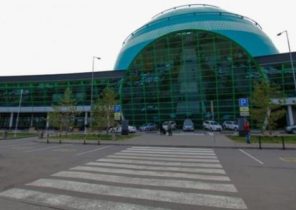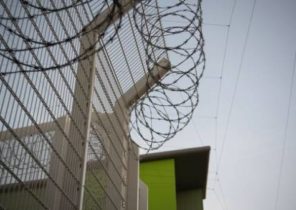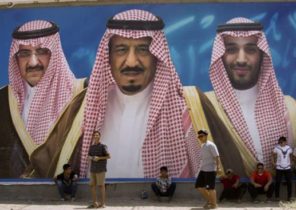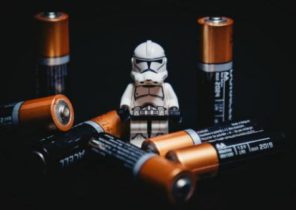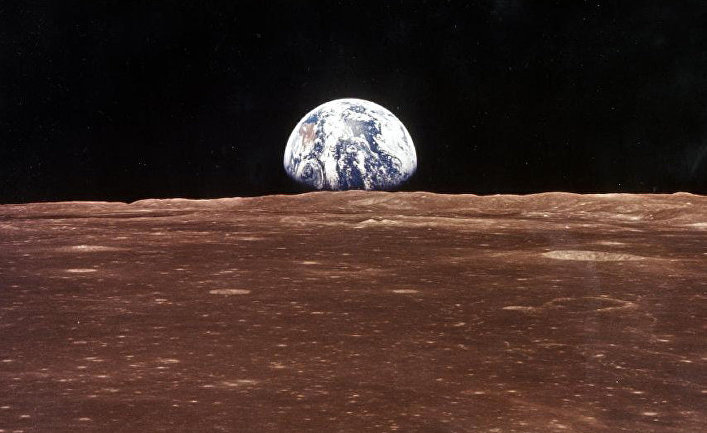
The second part of the Chapter from the book “the rocket Designers of the century”, forthcoming.
After the Queen the conquest of the moon in the Soviet Union were engaged in Vasily Mishin. However, the crew of astronauts on Earth’s first of all sent to Americans.
On the moon with a change in the open space
The basis of manned spacecraft to fly around the moon “7K-LK” was chosen household compartment “Union.” The group of designers under the leadership Feoktistov presented the first drawing of this device in mid-December 1965. The design work was supervised by Boris Rublyov. Chelomey was responsible for the rocket “UR-500”. However, he was more eager to participate in the landing of men on the moon, so the finished prototype of its lunar vehicle. A detailed study of the project there were many disadvantages.
In November 1967 in the USSR was preparing to celebrate the 50th anniversary of the Bolshevik revolution. Ustinov demanded from Mishin, a Soviet manned spacecraft orbited the moon for this year and next year — the astronauts would have landed on its surface.
In December 1966, at a meeting of the state Commission sparked controversy about these expeditions. Mishin was supposed to dock two spacecraft in earth orbit. First had to go “UR-500 proton” empty lunar unit, and then “R-7” as planned, take a ship with two astronauts. Then these objects were supposed to dock, and the crew is on hand through the open space to move in the ship “L-1” which on the moon would deliver the fourth stage of the rocket. The fifth step would allow it to enter the lunar orbit and to perform other maneuvers.
Bushuyev and Feoktistov supported this option. Chertok protested: “why, it’s a gamble! To the 50-th anniversary of you can’t do this!”
The chief designer of the ground installations Vladimir Barmin suggested flight “UR-500” with the crew. However, before the rocket was at least four times to take off without crashing.
General Tyulin said, “Work on both, and then we will decide what is better.” It was planned that the astronauts flew over the moon on 26 June 1967.
In December 1966, at a meeting with Ustinov Director of the Central research Institute of machine building (TsNIIMash) Yuri Mozzhorin warned that the Soviet project is behind us. Not enough funds, and Chertok wrote later that at that time really was to send astronauts to the moon until 1972, but not before. The development of engines for “N-1” in the following year showed that the gap from the American “Saturn 5” for up to five years.
Death at the time of planting and new delay
Many Soviet functionaries still not aware of the deplorable situation. The fourth of February 1967, the Secretariat of the CPSU Central Committee stressed that the flight around the moon and landing astronauts on its surface — it is a question of special importance. Also received an order a flyby of the moon to produce in June or July of this year, but landing in the September following.
In April 1967, returning to the descent module of “Soyuz 1”, killing cosmonaut Vladimir Komarov. The culprit was the Kremlin chief Leonid Brezhnev, who demanded the space of the fireworks during the international conference of Communist countries. The crash was guilty and Mishin: he could not refuse this demand, although he knew that the ship was not completed. All deadlines were violated.
During the tests, the Protons all the time failed. The first significant success of Soviet scientists have made only in April, 1968: the docking of two Soyuz spacecraft under the designation “Cosmos 212 and Cosmos 213” managed to one hundred percent. However, this was an isolated incident.
In January 1968 the Minister Afanasiev was summoned by General designer of Podlipec and his deputies. “We are in a difficult situation, — said the Minister. The Politburo does not believe our promises. In the space sector work is moving very bad, especially comrade Mishin. In the United States on the project “Apollo” working day and night. There complain that the preparation of the lunar module is delayed for 80 hours. For us it’s funny: we’re hundreds of days, not hours. Of all the organizations in the conduct of our Ministry, your office is the worst. So far we have not received from you a serious analysis of the prospects for a flyby of the moon.”
Mishin spread demagogy and tried to put the blame on other institutions. However, his deputies: Tregub, Bushuyev and Okhapkin — take criticism seriously, somewhat agreed, somewhat noted deficiencies. First Deputy, Okhapkin said, “We have not received money for the construction of experimental equipment for rockets “N-1”. Even if the Queen we designed “N-1” with errors, so our media is very far behind from “Saturn 5″. And we are now looking for solutions.”
Afanasiev, with some exceptions, all contested, certain topics avoided and solutions suggested. Saying goodbye, one of the Vice-Minister whispered with a smile the footsteps of Chertok: “During and after the war, under Stalin, such peace talks have not been conducted”. He meant that Stalin would give the order to shoot them.
On 23 January all the top designers are unanimous in their opinion: Mishin is not able to successfully complete a lunar project.
Mishina more and more criticized. Began to raise objections and his closest colleagues. He didn’t know how to work with people, and all hoped that after receiving the new position, he is a little better. But, unfortunately, the opposite has happened. Mishin was arrogant, always thought himself right and was not able to find compromises and solutions to complex problems. He has almost nothing worked. Dislike influential apparatchiks and colleagues at the Institute had an impact on the entire initiative.
Being the Deputy Korolev, Mishin worked perfectly, as noted by cosmonaut Alexei Leonov in his memoir: “But without Queen Mishin failed. He was a very good engineer, but with their weaknesses, one of which was alcohol. He was acting insecure, difficult decisions and was not willing to risk. Compared to Korolev, Mishin was not able to establish good relations with the Department of cosmonauts”. Leonov rebuked Mike that he favored astronauts-construcion of its Bureau, to the detriment of experienced military astronauts such as himself Leonov and Gagarin. The diarist claimed that if Korolev had lived longer, Soviet astronauts first flew to the moon. But it is somewhat biased and limited opinion.
Many experts in the missile field believed that a major role was to play the military. Defense Minister Marshal Andrei Grechko said in his budget has no money for this adventure.
There was a strange situation. Marshals sabotaged the sending of the first Russian on the moon, and the Kremlin could not order them, on the contrary, struggling to support this project.
To show a bust of Lenin on the moon
Mishin has proposed a new schedule of flights, which would allow Soviet cosmonauts to beat the Americans. The first flight of the “N-1” was planned in September 1967, the flight unmanned lunar spacecraft into earth orbit on Dec. And in February 1968 the test was scheduled to be held again. In April and in June was scheduled for the new flight tests with astronauts.
In August, according to plan, the lunar spacecraft will visit the moon and return to Earth, but without crew it will be managed automatically. For the first landing on the site first lowered the Rover with a radio beacon to which all will be induced. The second will arrive the spare automatic, and only then, in September 1968, landed on the moon would ship with an astronaut. If his aircraft was damaged, the astronaut would use a spare module. In case you need to order there will be more carriers and ships, which will be completed in October and December.
Although the government decided that work on the project “N1 — L3” should accelerate it and did not care about the material and technical support of its decision. Everything remained the same.
Camera “L-1” codenamed “Probe 4” was launched from Baikonur, the second of March 1968. This time he reached the moon but on the way back to the Ground there was a danger that the device will land in the unplanned area — either in Africa or in Turkey. Moscow could not allow this to happen. What if the ship fall into the hands of the Americans, and they will know the details? The self-destruct system eliminated the ship over the Bay of Biscay. Crashed a few “Protons”.
Only “Probe 5” (ninth “L-1”) launched on 14 September 1968, orbited the moon. But due to another system failure orientation ship landed in the territory of the USSR, and in the waters of the Indian ocean. There he found the Soviet vessel.
On Christmas day, 1968 “Apollo 8” circled the moon in July 1969, two astronauts from “Apollo 11” landed on the moon. The Soviet Union lost the race.
After evaluating these expeditions had defined new deadlines for Valery Bykovsky and Rukavishnikov Nikolay — 1972. “We could go for manned flight, — said Mishin in his diary after landing “Probe 8″. But when in July 1969 landed on the moon by Neil Armstrong, the flight lost a propaganda sense.”
The Soviet Union wanted to send to the moon orbiting spacecraft 11 “L-1”. On the Ground without any problems returned the three ships, and one crashed. Their reliability, as the reliability of the missile “UR-500K” Chelomey, was low. In the official history of the company “initiative — Energy” is said about two risks: the device did not have a spare parachute system, was not possible to save the crew in case of depressurization, and the carrier used toxic materials.
In addition, the work on the rocket “N-1” behind schedule. At a meeting of the members of the Council of chief designers on January 27, 1969, discussed the future of the rockets. Mishin insisted: “we did not Have enough money to move according to the schedule, so we don’t have time to test all the systems before launch”.
Keldysh, which still was a supporter of Queen in the lunar program, changed his mind: “If you evaluate the status of the project, it turns out that our first astronaut landed on the moon only in 1972! Why not think about the next step, for example, about the expedition to Mars? We can explore the moon with the help of machines. But for whom Barmin preparing a lunar base, why talk about Barenaked? Do we need this base? Do we need a station in lunar orbit? Do we need a large station in earth orbit? Who analyzed all these projects?”
As Deputy defence Minister on missile and space programs, the Tyulin, in turn, claimed: “Project “H1-L1″ is a priority. Why is he lagging behind? Now is not the time to talk about its ending — need to talk about where best to send our cosmonauts to the moon or to Mars. I suggest we concentrate on Mars.”
In 1973, the Soviet Union, according to Tyulin, can send using the “N-1” heavy automatic probe, and two years later, the two rockets will dock in earth orbit, and the Soviet Union to send an expedition to Mars, astronauts. If the Soviet machine or later, the astronauts find life on Mars, it will be an incredible sensation, and the Soviet Union again, get a space advantage over the Americans.
The meeting was filled with hypocrisy and lies. Everyone wanted to abdicate responsibility for the failure of the lunar race.
Thursday 21 February 1969, in bitter cold, for the first time an attempt was made to launch a rocket “N-1” from Baikonur. However, it exploded at an altitude of 14 kilometers, and its wreckage scattered for a distance of 19 kilometers North of the launch complex.
The second “N-1”, again heading to the moon, launched the third of July. She was carrying a space ship that was gently prionitis. However, this rocket was the same as that of the first. She fell from a height of 200 meters, exploded and damaged the launch complex.
“I was depressed, I felt guilty, confessed later Mishin. — After the first start we were sure that now will succeed”.
In some design offices and at the spaceport there were rumours: race for the moon ends, all projects are collapsed. This time Misha still managed to defend the Kremlin in the development of “N-1”. He even talked about what would improve the plans so that Soviet cosmonauts left on the moon’s surface much longer than American competitors. And again Mishin promised that the crew will land on the moon in late 1970.
At the meeting of the Military-industrial Commission first of August 1969, Mishin said that on April 22, 1970, the planned celebration of the 100th anniversary of the birth of Soviet state founder Vladimir Lenin. To this date, our astronauts should land on the moon and in front of cameras to show a red flag and a bust of Lenin which is there and leave.
Four explosions supermaket
Mishin was still full of optimism. He explained Kamaninu: “by the end of 1972 we will launch two more rockets “N-1″ without people, and then in flight you can send the first couple of astronauts to explore the moon.”
Among Soviet specialists have formed the opinion that sending people to the moon on one “N-1” is meaningless — must fly two superrally.
At two o’clock June 27, 1971, from Baikonur launched the third “N-1”. But soon the crash was given by the control system, and then other equipment. Landed 20 kilometers from the launch site, forming a crater with a depth of 15 meters and 30 meters wide. The rocket debris was scattered over many square kilometers.
The media needed a new control system was needed and the change in control over the first and second stage, and a number of others. Of course, everything had to be carefully checked. Together with the main designer of the rocket Boris Sokolov Mishin tried to develop these devices.
In June 1972, the staff of the Bureau in Podlipki started to design a large station IASC, which was to consist of two parts. The weight of each of them would have reached 80 — 88 tons, and the role of media supposed to be “N-1”. When docking of these two modules in orbit would make a base with a diameter of six meters and a length of 100 meters. Electricity station would provide a carrier-based Autonomous power and solar panels with an area of 140 square meters.
Six to ten astronauts would be engaged in there is astronomical and astrophysical research, experiments in microgravity, remote study of the Earth for the needs of agriculture, forestry and fisheries, and Geology. In addition, the military could be put before the astronauts of the station your tasks. IASC was to become part of a new space infrastructure, which would include the Orbiter, based on the deck of the station, as well as reusable transport apparatus and the like.
Improved superrace “N-1” was brought to the launch complex of only 17 months. The works were supervised by Chertok, Mishin because again was in the hospital, as his first Deputy, Okhapkin.
“N-1” was launched on the morning of 24 November 1972. Almost two minutes she rose, but 107 the second exploded in the first stage. He was followed by other explosions.
Fifth media “N1 — L3” planned to test in April 1974. New better engines that Nikolay Kuznetsov sent from Kuibyshev (now Samara) began to mount on another carrier at Baikonur in may 1973. The sixth rocket is scheduled for the end of the year, and she had to go to the moon and deliver the module for landing.
Some Soviet engineers later claimed that approximately in 1976, the tenth rocket was supposed to be manned. However, in 1972, Mishin was planning 12 unmanned test, that is only on the 12th or 13th start in the cockpit, “L-3” would be people. “Only after achieving a certain statistical reliability, it would be possible to send astronauts,” — said Mishin over many years.
Farewell to superalloy and Mishin
Work on superalloy was accompanied by difficulties. “This launch vehicle promised a lot,’ recalled Mike. But, unfortunately, it has affected our lack of organization and common technical level. Over the “N-1” worked with 500 organizations from 26 agencies. But only nine of them were in the competence of the Military-industrial Commission. Others needed to ask. No decision of the Council of Ministers did not help, and companies often refused the order, citing the fact that it is not their profile. Deliveries were delayed. For instance, during the Queen was not performed ten tasks and at me ten times more. But even in such circumstances, Kuibysheva did for Queen of the seventh “East”, and then on the same terms set to “N-1”.
First of all, not enough funds. “By the first of January 1972 all the costs of the project “N1 — L3″ was (or rather, was issued on this project) to 2.9 billion rubles — sorry Mishin over time. — The most money we only got in 1970 — about 600 million rubles. However, these funds were provided directly to ministries, spending out of control, at their own discretion”. Important guidance was provided by the Secretary of the CPSU Ustinov by the Military-industrial Commission, which is now headed by Deputy Prime Minister Leonid Vasilyevich Smirnov. “In General, the organization of work on the project “N1 — L3″ was typical of the period of stagnation of our society,” — said Mishin.
This demoralization was compounded by the jealousy and intrigues Glushko, which is oriented in the Kremlin Wednesday. This brilliant designer was striking the fact that the propulsion system for supermaket does not, he and Kuznetsov.
Writer and journalist Yaroslav Golovanov, who first worked as a rocket engineer, was skeptical about the “N-1”: “This medium has a very small mass of the payload, which it was impossible to raise. Missile “R-7”, on the contrary, flies in 1957, but easily modernizarea, because it is possible to easily add new steps. The concept of “N-1″ was very conservative, and in her case this was impossible.”
Feoktistov also considered the failure of the lunar project, a mistake Queen: “the Fault is not his successor, Mishin, and the king himself. In the form in which the project is “N1 — L3″ was founded, it was impossible to implement”.
Mishin did not give up, but his work paralyzed the orders of his superiors. In early 1974, he, together with Nikolay Kuznetsov, sent a complaint to Brezhnev. Two academician not only reminded of the ambitious plans, which could raise the authority of the Soviet Union, but also warned about the risk of lagging of the country in missile and space technology.
And again Mishin did not guess the degree of risk. Brezhnev passed on the complaint Ustinov, a man that was criticized. The appellant at this time was in the hospital, so could not walk to classrooms and to explain their intentions.
In March 1973 the Collegium of the Minister of General engineering noted serious omissions in the leadership of TsKBEM. These findings were in agreement many staff design Bureau. Finally Deputy chief designer and Director Mishin, Bushuyev, Chertok, Feoktistov, Kozlov and hooks agreed with Ustinov and demanded that the Secretariat of the CPSU Central Committee and the Ministry of General machine building, to remove their chief from the post. The main reason? Mishin did not respond to the comments about the shortcomings in management.
First, Ustinov wanted to resolve the situation, but in early 1974 he came to the conclusion that Mishin no longer be left in the position. Ustinov was offered a place to Kozlov, but he refused, because he didn’t want to leave his branch in Kuibyshev.
Meanwhile, Ustinov received a tacit nod from the Kremlin on the closure of the project vehicle “N-1”. From 1 may 1974, by order of the top party Chapter, all work on superalloy stayed. This meant the end of the remaining projects, which were based on this vehicle: moon bases, large space stations, machines for collecting soil on Mars, expeditions to Mars, hundred-meter astronomical telescope and a large telecommunications satellite. At Baikonur technicians ordered to destroy six supermaket, at different stages of installation, and the plant in Krasnoyarsk was stopped production of ten more such missiles.
“By January, 1974, in total, the conquest of the moon under the program “N1 — L3” spent 3.6 billion rubles, of which for the construction of “N-1″ has been allocated 2.4 billion (Soviet roubles),” wrote the authors of the official history of the enterprise “initiative — Energy”. Losses reached six billion. However, according to the official historians, the creators of the rocket “N-1” has spent over 13 years of development 14.5 billion.
May 18 at the regular meeting of the leadership of CBAS has arrived the Minister Afanasyev. Mishin again was in the hospital. The Minister said that the Politburo decided to release from Mishina office since may 22, and to appoint in his place Glushko. Two organizations: TsKBEM Design Bureau of power engineering (CBAM), as it was now called OKB-456, should be combined into one.
All was dumbfounded. Nobody expected it to happen. “The man who ten years ago, I criticized everything that made Korolev, and what continues to make Mishin will be our boss?”
Mishin, at least in his own words, then said Ustinov, “I can understand, but to understand why you gave my spot that Glushko, I can’t. He is a bad constructor of engines and never will be a good chief designer of the missile systems, because it is already too old to learn is too late.”
When after recovery, former head of the TsKBEM wanted to take their personal belongings from the office, Glushko did not let him inside. Mishin had to wait at the entrance until the Secretary, taking pity, brought him things.
In late July 1974, the branch Kozlov in Kuibyshev became independent, becoming a Central specialized design Bureau (TsSKB). In December, the goats finished “Space 697” or “Yantar-2K,” the first of a series of optical reconnaissance satellites.
Mishin fully immersed in teaching at the Moscow aviation Institute, where he became head of the Department of design and construction of aircraft, which he himself had created in 1959.
The rivalry between the two social systems
With the advent of Mishin Soviet space program has lost momentum. But even if Korolev had been alive, probably, the USSR still would have lost in the championship for the conquest of the moon.
This defeat was four reasons. They outlined to me by the academician Mishin during our conversation in the fall of 1990 at the international Congress of astronauts in Dresden: “first, the United States had a greater scientific-technical and economic potential than the Soviet Union. Second, project Apollo had become in the United States as a national goal, the question of prestige, and its implementation did not spare neither money nor material resources. We didn’t have such funds. Thirdly, intoxicated by the first great success in space, such as the launching of Sputnik and the flight of the first man, we underestimated the appeal of President Kennedy made in the summer of 1961. Until 1964 we have not paid attention in the landing of men on the moon. For Khrushchev’s priority was flight around the moon without landing, and worked for chief designer Chelomey. The Americans did not have a separate plan to fly — he became part of a larger project. By the way, it was a mistake to implement two projects in parallel. And fourth, we underestimated the scientific and technical difficulties in carrying out this task. All of these reasons, and others associated directly with the specifics of that period of our history, objectively interfered with the sending of the lunar expedition and led to delays in this area from the United States.”
In 1990 the magazine “Young guard” specialist in rocketry Herman Nazarov have accused of lagging behind the USSR in this sphere and specific functionaries of the Secretariat of the Central Committee of the CPSU, the instructor of the Department of defense and V. A. Popov, head of the Department B. A. Stroganov, Deputy head of the Department I. D. Serbin and, above all, Secretary of the Central Committee Ustinov. These party leaders made the decisions, not having the appropriate qualifications.
Biographer of Queen Golovanov’s book, “Korolev: facts and myths” wrote about the main reason for this: the “space Race essentially turned into a competition between two economic systems. There were hundreds of reasons why we are ahead of Americans in space. And was one reason they had to catch us up: they were richer. Understand whether it is Queens? I think they understood”.
In 1989 Vasily Mishin retired, but continued to visit the Department. In the second half of 80-ies, when the General Secretary of the CPSU Mikhail Gorbachev announced glasnost, Mishin manifested itself by publishing a series of articles about the history of the Soviet space program, which, according to some experts, was somewhat controversial.
In an interview that Mishin gave in 1998 to the American historians, he said: “Rivalry and the cold war played a certain positive role in everything. As a result, developed a very important industry in different countries, primarily in the United States and us. For example, we would not have achieved the success in space exploration if other areas of our science and industry have not been successful. From this point of view, the competition has played a positive role. But it also played a negative role. Politicians have taken a one-sided stance and tried to improve the lives of all people.”
Second, the chief designer died in Moscow on 10 October 2001 at the age of 84 years. At the funeral there were all the management of the enterprise “Energy”, and the astronauts were present Vitaly Sevastyanov and Valentin Lebedev.
